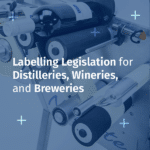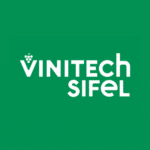In the world of packaging, the choice between linear and rotary machines for automatic filling and labelling is a crucial decision for the wine, pharmaceutical, food and many other industries.
This new article aims to explore in detail the features, advantages and disadvantages of these two types of machine.
- Linear Machines : A Structured and Precise Approach
Linear machines, arranged in a line, take a methodical and structured approach to container processing. All these machines are fully automatic and incorporate a conveyor, offering precise management of the production process as well as significant advantages in terms of precision and adaptability.
Conveyors, as automated transport systems, are essential to ensure the smooth and efficient movement of containers from one machine to another all throughout the packaging process. Designed to integrate perfectly with our machines, these conveyors contribute to optimum automation of the filling, screwing and labelling.
Automatic linear fillers, such as the K-Net Auto and K-Line S, are also renowned for their precision. These machines, which integrate screwing and capping functions, provide a complete solution for packaging liquid products, with the flexibility to handle different container formats.
When it comes to automatic labelling, linear labellers such as the R1000 or the Ninon Konic guarantee uniform and accurate application of labels to each container, meeting the strict standards of different sectors of activity.
- Rotary machines : Maximising productivity through a circular approach
Rotary machines have a circular layout for processing containers. At CDA, we do not offer rotary machines because we prefer linear solutions. Indeed, we have opted for linear machines : as they are more versatile, simple and efficient.
However, it’s important to note that rotary fillers, screwers and labellers are generally preferred for high speeds. They allow a quick application thanks to its continuous movement.
- Comparison with Advantages and Disadvantages
-
- 3.1 Advantages of Linear Machines
Linear machines stand out for their ability to ensure maximum precision when filling and applying labels to containers.
Their adaptability is another strong point, as they can easily be adjusted to different container formats. As a result, they offer considerable versatility to companies with a wide range of products.
Thanks to their linear approach, these machines enable methodical and structured packaging management, contributing to an optimal and efficient packaging line process.
-
- 3.2 Disadvantages of Linear Machines
Although linear machines are highly accurate, they can be limited in terms of production speed compared to rotary machines, which often offer higher speeds to maximise industrial efficiency.
Furthermore, because of their in-line layout, linear machines can require more space in the production line. This space constraint can be a factor to take into account when planning the layout of the factory or production workshop.
-
- 3.3 Advantages of rotary machines
The use of rotary machines offers a significant advantage in terms of high output, providing faster packaging and maximising overall productivity. This characteristic makes them particularly suitable for production environments requiring high throughputs.
-
- 3.4 Disadvantages of rotary machines
Although rotary machines offer high output, a major disadvantage is their low adaptability. This limitation can lead to increased complexity in managing different types of products and formats. In addition, these machines are often much more complex to set up and operate than linear machines.
Another point to consider is the high initial investment associated with rotary machines. Although they can be profitable in the long term, the initial cost can represent a financial challenge for some companies.
- The Versatility of CDA Solutions
At CDA, we understand that every business has specific needs. Our range of machines incorporates automatic linear solutions to provide a complete response for industry requirements. Whether you need an automatic labeller for maximum accuracy or a filler to maximise productivity, CDA solutions are designed to fit your production environment.
CDA’s linear machines offer a precise and organised approach to labelling as well as filling. These systems are ideal for companies that value precision and versatility in their product handling.
- Choose the right solution for your needs
In conclusion, the choice between a linear and a rotary machine depends on the specific needs of your business. Linear machines offer maximum precision and adaptability, ideal for environments where format diversity is essential. On the other hand, rotary machines maximise productivity and are particularly effective for high production volumes.
At CDA, we’re proud to offer a complete range of filling, capping and labelling solutions, as well as monoblocks to suit any requirement in every industry.











